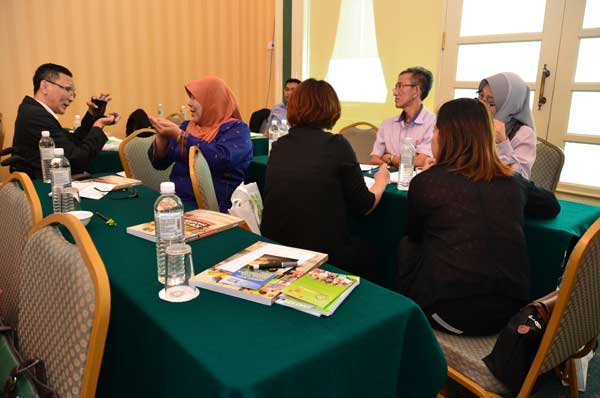Oft-asked questions about disability
April 5, 2015, Sunday Peter Tan

IN the Disability Equality Training (DET) workshops I conduct, I encourage participants to ask questions and invite other participants to respond and comment. It is through this process of questioning and sharing that we are all able to learn more effectively.
At a recent workshop, one participant asked, “You talk about removing barriers in society. What about the barriers in the attitude of disabled people?”
This is not an uncommon question. Disabled and non-disabled participants have raised it at one time or another.
We usually look at the problems of disability from the social construct and social attitude perspectives. The marginalisation of disabled people are undoubtedly caused by physical barriers, prejudice and discrimination in society. These are the barriers we want removed.
At the same time, I concur some disabled people have attitudinal issues that need to be sorted out. They have to move away from the shackles of negative self-worth that are holding them back and have proven to be stumbling blocks to their participation in society.
How we view ourselves is manifested in how society views us. Disabled people are generally seen to lack self-esteem, self-confidence and self-respect. That is the reason the subject about attitude is brought up time and again. Disabled people show it and society sees it.
Attitudes can be changed and have been changed. Although it takes time, changes have been accomplished through counselling, peer support and dialogues with other empowered disabled people.
However, changing the attitude of disabled people cannot solve the problems we face if the barriers in society are not removed. Disabled people brimming with positive attitudes will still have to struggle if the environment is inaccessible.
That is why in DET there is always an emphasis on applying the twin-track approach to achieve the goal of realising full participation of disabled people.
On one part, society takes action by removing barriers and includes the interests of disabled people in all policies and programmes for development. This is called enablement and the mainstreaming of disability.
On the other part, resources and support are provided to disabled people for us become agents of change and participate meaningfully in the development of society. This constitutes the empowerment of disabled people.
For change to happen, it is best for both to work in parallel and simultaneously. One without the other will not be very effective.
As a gauge of its usefulness, the United Nations, through the report of the Secretary-General on mainstreaming disability in 2012, promotes the twin-track approach to governments, civil society and other stakeholders as a process for the inclusion and equalisation of opportunities for disabled people.
The other question often asked during workshops is “Why should we spend so much to make facilities for only so few people?”
Whenever participants ask this question, I throw it back to the floor asking if they have an elderly family member with limited mobility or if they know of someone who acquired impairments through disease or accidents in adulthood. Only then do they realise someone they know needs these facilities as well. Disabled people may be a minority but our numbers are by no means small.
The World Health Organisation fact sheet on disability and health estimates that between 110 million (2.2 per cent) and 190 million (3.8 per cent) of the world’s population aged 15 years and older have significant difficulties in functioning.
The fact sheet further states that rates of disability are increasing in part due to ageing populations and an increase in chronic health conditions. Malaysia is headed towards becoming an ageing nation in 2030 when 15 per cent of the population are over the age of 60.
In developed nations where accessible facilities are commonplace, they were put in place not specifically because of disabled people but more for the benefit of an ageing population. This is an issue we should seriously think of in our country seeing that we are just 15 years away from that threshold.
Statistics aside, facilities for disabled people are required by law. If they were included in the planning or construction stages, the additional cost would be minimal. It becomes expensive when existing structures have to be modified and renovated to include them at later stages.
Furthermore, accessible facilities can be used by non-disabled people as well. Nobody is deprived with the addition of such facilities but when they are not available, we disabled people will face significant problems in our daily activities.
Most of the time, my role as a trainer is not to provide answers to participants’ questions. Rather, I apply a method called Facilitated Participatory Learning where I guide them to discover the answers by themselves. This is a better way of learning as they will remember the answers as opposed to feeding them with information which they will forget as soon as they walk out of the workshop at the end of the day.
Even though I do not usually have to answer the questions directly, I spend a lot of time poring over my notes and books, and discuss with other trainers to get a deeper understanding of the various disability issues. This will make it easier for me to guide the participants of my workshops more effectively.
Comments can reach the writer via columnists@theborneopost.com.
Read more: http://www.theborneopost.com/2015/04/05/oft-asked-questions-about-disability/#ixzz3hpysuk7l
